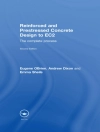Permitting the disposal of concentrate and other waste streams is often one of the most challenging tasks associated with the development and implementation of desalination projects. This study focuses on the review of key regulatory requirements, support studies, and permitting practices for medium and large seawater reverse osmosis (SWRO) desalination plants in the United States and abroad. The size range (from 2.5 to 110 MGD or 9.5 to 440 ML/d) covers most plants built since 2005. The study is based on permitting experience with recent SWRO projects and is focused on the regulatory issues and considerations associated with the most commonly used concentrate management method: discharge to surface water bodies. Issues specific to the permitting of thermal desalination plants are not addressed in the report because, although popular in the Middle East, thermal desalination has not found significant application in seawater desalination in the United States and most other developed countries. The formal project objective was to identify the discharge information that permitting agencies need and the decision-making process they go through to permit discharge methods in order to help desalination project proponents focus and expedite their permitting efforts. The project involved documenting SWRO discharge regulatory information and facility information for the United States and selected countries. In the United States, the National Pollutant Discharge Elimination System (NPDES) permit is the primary permit required for discharge to surface waters. Discussion focused on events, information, and issues associated with obtaining an NPDES-type permit. One of the key limiting factors in the construction of new seawater desalination plants is the availability of suitable conditions and locations for disposal of the high-salinity sidestream commonly referred to as concentrate or brine. Concentrate is generated as a by-product of the separation of the minerals from the source water used for desalination. This liquid stream contains in concentrated form most of the source water s dissolved solids as well as some pretreatment additives (i.e., residual amounts of coagulants, flocculants, and antiscalants) and other chemicals, as well as microbial contaminants and particulates rejected by the reverse osmosis (RO) membranes. If chemical pretreatment is used, such as coagulants, antiscalants, polymers, or disinfectants, some or all of these chemicals may reach or may be disposed of along with the plant discharge concentrate. Chapter 1 of the report provides background and contextual information for the study including the relatively new interest and recent challenges associated with the permitting complexity of medium and large SWRO desalination plants in the United States.
Mike Mickley & Nikolay Voutchkov
Database of Permitting Practices for Seawater Concentrate Disposal [PDF ebook]
Database of Permitting Practices for Seawater Concentrate Disposal [PDF ebook]
Купите эту электронную книгу и получите еще одну БЕСПЛАТНО!
язык английский ● Формат PDF ● ISBN 9781780408484 ● издатель IWA Publishing ● опубликованный 2016 ● Загружаемые 3 раз ● валюта EUR ● Код товара 5760681 ● Защита от копирования Adobe DRM
Требуется устройство для чтения электронных книг с поддержкой DRM












